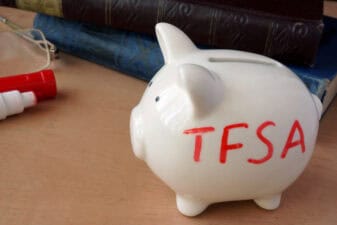The main benefits of a Tax-Free Savings Account (TFSA) are tax-free growth, tax-free withdrawals, and hard-to-beat savings flexibility.
However, getting the most from your TFSA isn’t always easy. Like many Canadians, you could make mistakes that cost you money in unnecessary penalties and taxes or prevent you from growing your wealth. Here are three mistakes to avoid at all costs when managing your TFSA.
Overcontributing to your TFSA
Perhaps the most common mistake made by TFSA owners is overcontributing. The truth is, many of us don’t know how the TFSA contribution limits work.
The excess contribution penalty can add up — it’s 1% of the excess contribution for each month you exceed the limit. To reduce the penalty, you must withdraw excess funds or wait until sufficient contribution room is created in the following year (or years thereafter) to absorb the excess contribution.
You can overcontribute to your TFSA in two ways. First of all, you can just put too much money in your account. How much is too much? It depends on how much you have contributed to your TFSA. If you were at least 18 years old in 2009 but never had a TFSA until now, you can contribute up to $75,500 for 2021. If you have maximized your contribution room each year, your limit is $6,000 for 2021.
A more subtle cause of overcontribution stems from a misunderstanding of the consequences of withdrawing from a TFSA and then re-contributing in the same calendar year. The problem? When you withdraw, a new contribution in the same year is considered to be a new deposit against your contribution room.
Failing to recognize the impact of market gains and losses on your future contribution room
The change in the value of your TFSA can have a big impact on how much you can contribute in the future. A fall in value leaves less capital to withdraw. And, because you can’t recontribute more than you take out, a market loss essentially reduces your future contribution room. Let’s take an example to explain.
Suppose you put $6,000 in your TFSA. Over time, the market value of this contribution drops to $5,000. If you withdraw the remaining value, you can only return $5,000, not the $6,000 you originally contributed.
Fortunately, the opposite is true when your TFSA outperforms. If the value of your initial contribution is, say, $6,000, you can withdraw and recontribute that larger amount, so that market gains increase future contribution room. For the same reason, the income received increases the value and the contribution room of a TFSA.
If you think you might have to withdraw from your TFSA, consider the effects that market movements may have on your future contribution room. Then carefully decide which investments have the appropriate level of risk. If you are a conservative investor, you may want to think twice before holding volatile investments in a TFSA. A volatile stock like HIVE Blockchain Technologies might not be the best choice in that case.
Holding investments that generate foreign income
While TFSAs and RRSPs are both tax shelters, that doesn’t mean they treat all investment income the same.
The Income Tax Act considers an RRSP as a a retirement savings plan. This means that if you receive dividends in your RRSP from companies domiciled in countries that share a tax treaty with Canada (the United States, for example), that income is exempt from withholding tax generally imposed by foreign jurisdictions to Canadian investors. This is good news if you own foreign content as part of a balanced portfolio.
A TFSA, however, does not share the same exempt status as an RRSP, leaving foreign dividends paid into a TFSA subject to withholding tax.


